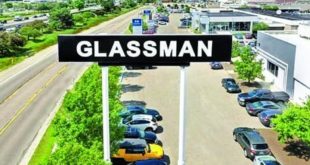
Aggressive incentives didn’t prevent new-vehicle demand from falling by double digits in March, but J.D. Power believes they allowed the Detroit 3 to take their largest slice of new-vehicle sales since 2006.
Since launching a wave of incentives that includes 0 percent interest rates on seven-year loans, the Detroit 3 captives have seen their share of financed new vehicles skyrocket 60 percent.
Ford Motor Credit Co., GM Financial and Santander Consumer USA’s Chrysler Capital business originated 31.8 percent of new-vehicle financing from mid-March to April 8, according to J.D. Power, up from 19.9 percent in the weeks prior. All other captives, which include banks’ captivelike relationships, comprised 38.4 percent of the market.
Tyson Jominy, vice president of data and analytics at J.D. Power, said origination shares for the Detroit 3 may have been even higher had the automakers not offered to extend leases.
“Lease buyers are staying out of the market. You don’t have to come back to market if you’re not comfortable going outside your house,” Jominy said.
The Detroit 3 stole market share of new-vehicle originations from virtually every other lender. All other automaker captives’ new-vehicle originations fell 12 percent, with banks’ falling 20 percent, J.D. Power said. Market share also dipped slightly for credit unions and independent finance sources in the same time frame.
Smaller pool
Coronavirus closures lopped 472,000 vehicle sales off the initial 1.09 million sales forecast for March, J.D. Power said. Light-duty pickup sales drove originations for the domestic automakers, which sold over 315,000 vehicles in March.
At the end of March and in early April, domestic sales made up over half of new-vehicle sales for two weeks, for the first time in 14 years.
Jominy said it is not the usual consumers who are getting these low- to no-interest financing deals on seven-year loans. Older, typically more affluent consumers are out of the market at higher rates than younger, typically less creditworthy buyers.
“There’s a greater portion of younger buyers in the market, and we’re seeing a slight slide in FICO scores,” Jominy said.
Reasons for that likely are threefold: Americans in higher age brackets were harder hit by stock market losses; older consumers are less likely to require an emergency purchase; and given the age-related complications of the coronavirus, they may be less inclined to leave their homes.
During the week ending April 5, 0 percent financing was taken by 23 percent of new-vehicle buyers, the highest-ever figure J.D. Power recorded and three times the typical levels.
Mike Buckingham, senior director of the auto finance practice at J.D. Power, said that in a stagnant market, aggressive incentives are all that’s moving metal. But how long can automakers keep it up?
“This could be around for a little bit,” Buckingham said. “It is costly, but depending on how the market is, what is the alternative?”


